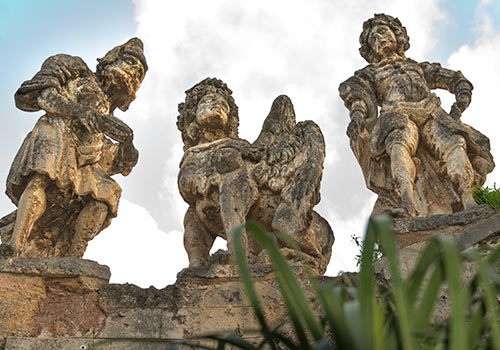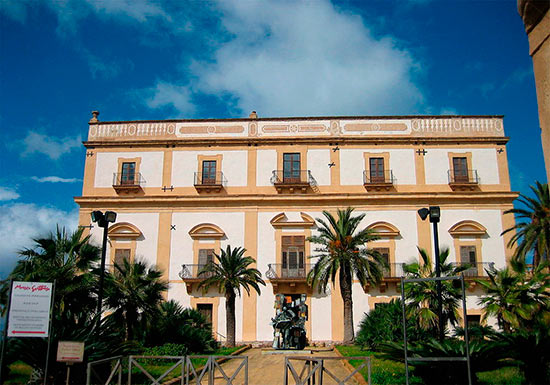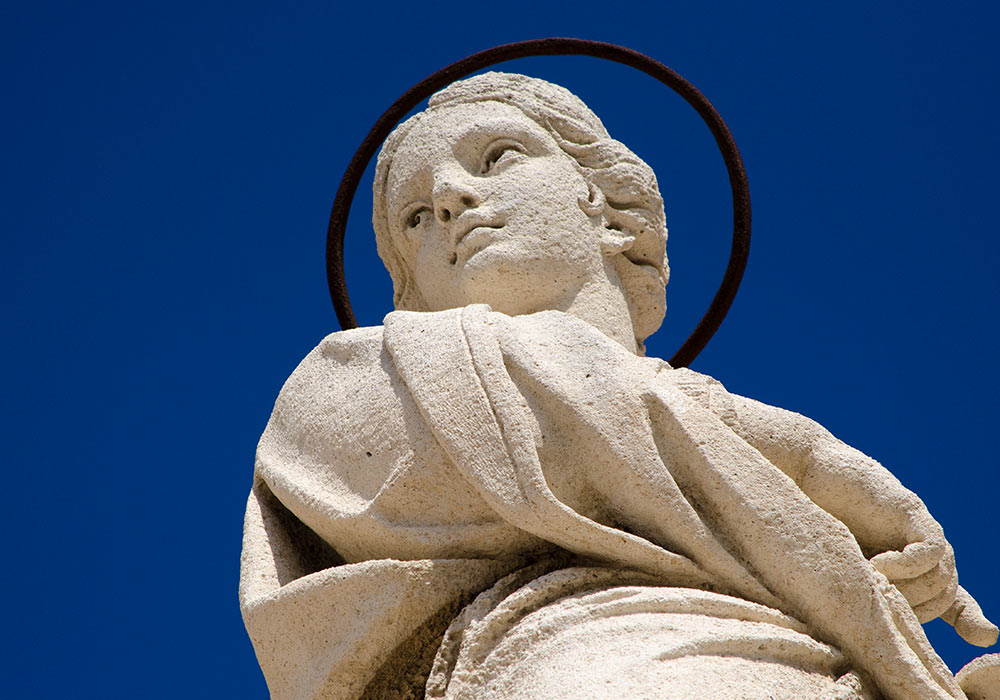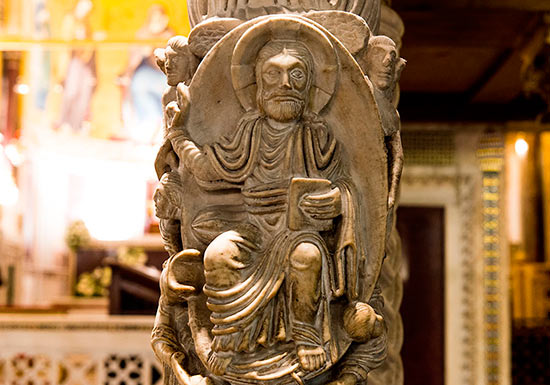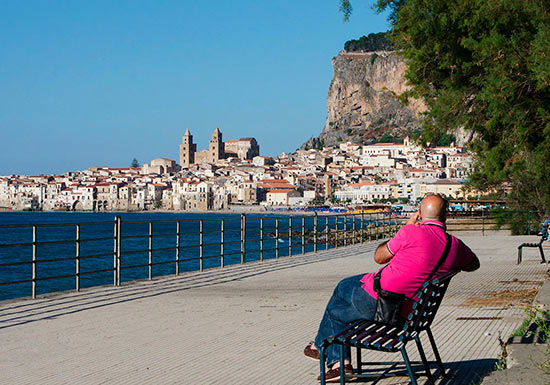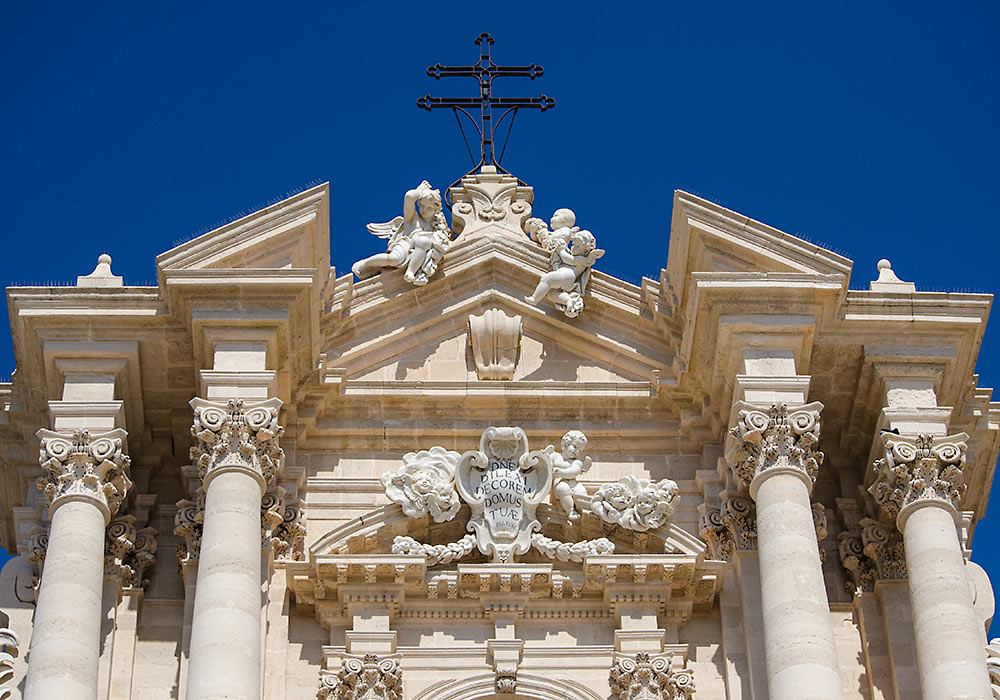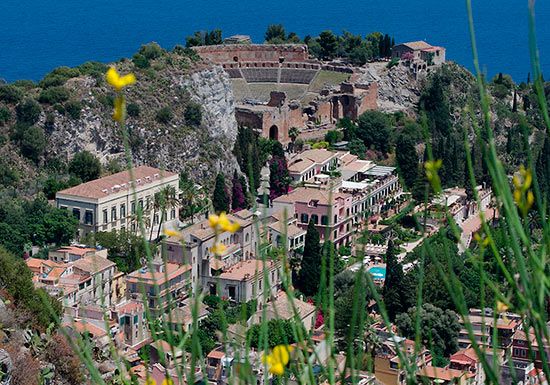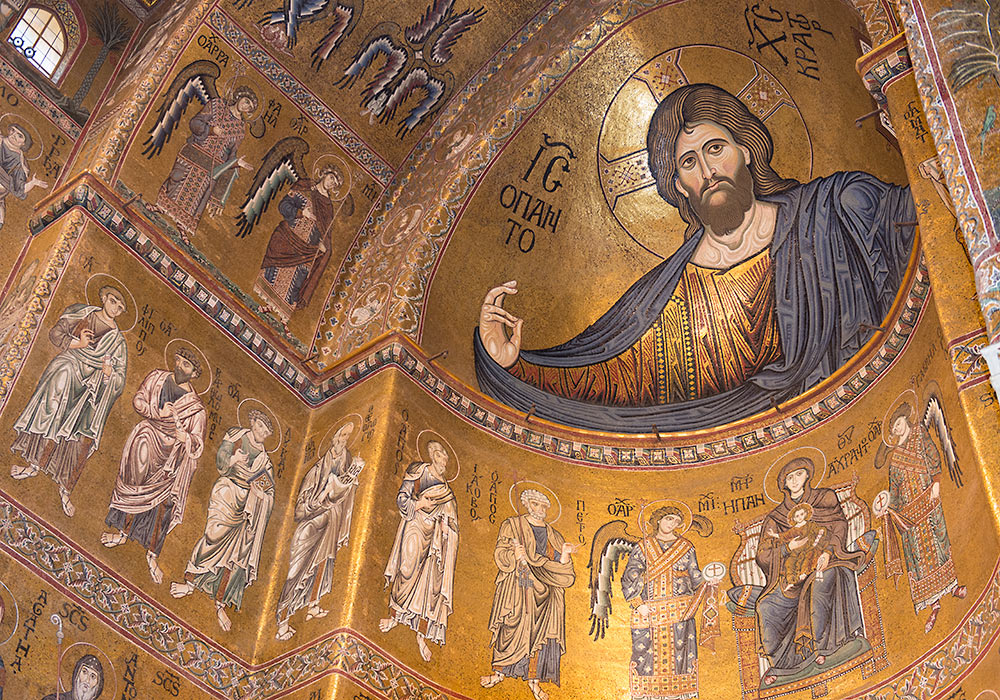The Syracusia (Siracusia) - sailing vessel designed by Archimedes
The Syracusia (Siracusia)
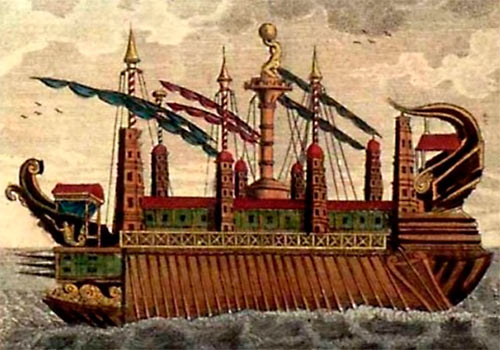
The Siracusia
Legal Notice
Written by Stella Nenova, published on 29 November 2015 under the following license: Creative Commons: Attribution-NonCommercial-ShareAlike. This license lets others remix, tweak, and build upon this content non-commercially, as long as they credit the author and license their new creations under the identical terms.
About Stella Nenova
 Stella has a master degree in classics and PhD in ancient history, specifically ancient Greece and Roman Empire. She was university lecturer in Latin and ancient Greek for five years. Now she writes a blog www.ancientworldalive.com about ancient history.
Stella has a master degree in classics and PhD in ancient history, specifically ancient Greece and Roman Empire. She was university lecturer in Latin and ancient Greek for five years. Now she writes a blog www.ancientworldalive.com about ancient history.
The Syracusia was an ancient sailing vessel designed by Archimedes in the 3rd century BCE. She was fabled as being one of the largest ships ever built in antiquity and as having a sumptuous decor of exotic woods and marble along with towers, statues, a gymnasium, a library, and even a temple.
A New Approach
Ancient seafaring is usually perceived as a cabotage maritime navigation. The term comes from the French verbcaboter meaning “traveling by the coast.” People of antiquity (Egyptians, Greeks, and Romans) usually sailed following the coast line and did not take the risk of going too far out on the high seas. Nevertheless, there are sources confirming that there were exceptions, and the first of them took place as far back as the 3rd century BCE.
In Sicily, under the ruling of the king Hiero II of Syracuse (270 – 215 BCE), a ship with stunning dimensions was built. The material used for the construction of that giant boat equated to the material for 60 regular ships. What was more, that vessel was meant to leave the secure coastal lanes and to cross the Mediterranean Sea. The ship was given a name – Syracusia – and represented what could be called “the first liner of antiquity.”
Archimedes
Archimedes of Syracuse was an ancient scientist and inventor who lived between 287 – 212 BCE. In his book “On Floating Bodies”, written around 250 BCE, he described some of the principles of the hydrostatics he had discovered. He was busy with this particular research when he allegedly pronounced his famous “Eureka” and started running around naked (as he was in the bath). That story might have been a bit exaggerated by Vitruvius, who was the first written source of that episode over a century later but it is certain that Archimedes made great scientific inventions which gained him lasting fame as one of the leading scholars of antiquity.
Archimedes was persuaded to correspond with the ruler of Syracuse king Hiero II. In one letter, he boasted his abilities to move any heavy object in the world he wanted. “Give me a place to stand and I will move the Earth!” (ΔΟΣ ΜΟΙ ΠΑ ΣΤΩ ΚΑΙ ΤΑΝ ΓΑΝ ΚΙΝΑΣΩ) he declared and immediately drew the attention of the Syracusan king. Impressed by the knowledge of the famous scholar, Hiero II decided to give him a special task – to design a ship, the biggest and the largest one he could invent. Archimedes did his best and surpassed all expectations.
The Syracusia
When Archias of Corinth built the ship according to Archimedes’ plans, it turned out that she was so big that no harbor in Sicily was large enough to admit her. Hiero II had to think long and hard what to do with her. Eventually, he decided to send the ship as a present to Ptolemy, the king of Egypt.
The Alexandrian port appeared to be the only one that could host this marvelous construction. Hence, originally named as “Syracusia,” the ship was renamed “Alexandria” and prepared for loading.
Athenaeus in his book Deipnosophistae, cited the only description of the vessel and its load was written by the historian Moschion of Phaselis. According to his narrative, the Syracusia/Alexandria was loaded with:
- - 60, 000 measures of corn
- - 10, 000 jars of Sicilian salt-fish
- - 20, 000 talents (500,000 – 600,000 kg/ 1,102,000 - 1,323,000 lb) weight of wool
- - 20, 000 talents of other cargo (500,000 – 600,000 kg/ 1,102,000 - 1,323,000 lb)
- - 2, 000 measures of water in a container for drinking and bathing
Besides all this, on board there were also the crew, passengers, soldiers and even horses.
Dimensions
The facts we know about the Syracusia come from the text of Athenaeus and they are as follows:
- Length – 55 m (180 ft), some other sources give 110m (360 ft)
- Cargo capacity – between 1, 600 and 1, 800 tons and 1940 passengers, warriors and crew, as well as 20 horses with separate stalls for everyone.
- Timber used for building the Syracusia – equal to the material needed for 60 standard triremeships (40 m long and 6 m wide)
- Construction period – 1 year, built by 300 workers
We know about ancient authors’ tendency to exaggerate facts in their enthusiasm to describe something extraordinary. Even so, the Syracusia must have been a remarkable ship. Stories have been told about her sea launch that had appeared impossible by the conventional means at that time. The ship just could not have been drawn out of the dock no matter how many men had been used. Archimedes amazed Hiero II once again. He was able to launch the ship single-handedly using a system of pulleys (the block-and-tackle pulley system was one of the many technological inventions of the Syracusian scholar.)
The Wonderous Interior
The size of the Syracusia was not the only impressive fact about her. According to Moschion the ship's amenities would have stunned even modern passengers and cruise-lovers. Cypress wood, citrus wood, and ivory were some of the described materials. Also, all rooms had floors composed of mosaic work of all kinds of stones. These illustrated the whole story of the Iliad and represented, in fact, the earliest mosaic depiction in literature. Countless drawings and statues, goblets and vases adorned the internal space of the Syracusia. The ship was equipped with a library and reading room, a drawing room, a gymnasium, a bathroom, a dining room, and kitchen spaces with wooden stores, ovens, and mills. Near the head of the vessel, there was a cistern of fresh water for drinking and bathing (according to some calculations around 78 tons in capacity). Next to this cistern was a built-in sea-water fish tank full of fish for the cook’s use.
The upper deck was supported not by regular columns, but by statues of Atlas (the Titan who held up the sky in Greek mythology) of six cubits high (around 3 m / 118 in). Along the uppermost deck, there were walks with gardens of different sorts of flowers and plants. Some parts were shaded with roofs of tiles; others had tents roofed with branches of white ivy and vine. The roots of the plants were earthed up into special casks full of soil and regularly watered. The magnificent walks led to a temple of Aphrodite, with a floor of agate stone, furnished in the most exquisite manner with statues and pictures. 142 cabins for first-class passengers were also located on the second deck.
The crew and around 200 (according to others 400) soldiers were accommodated in the lower deck. 20 separate horse stalls were part of that area too. The ship was also well protected. There were eight towers with four men and two archers on each. Between 200 and 400 soldiers were ready for orders at a special deck in front of the vessel where a giant catapult was mounted. A palisade was built all around the ship to prevent attempts to board. Four wooden and eight iron anchors ensured her security at port.
Unfortunately, the Syracusia sailed just once – on that trip from Sicily to the North Africa. It is not known for sure what happened to her after that, as she was never mentioned again in any later historical sources.
The distance between Siracusa and some other cities in Sicily
Siracusa-Agrigento 217 km
Siracusa-Catania 66 km
Siracusa-Cefalù 249 km
Siracusa-Modica 72 km
Siracusa-Noto 38 km
Siracusa-Palermo 277 km
Siracusa-Ragusa 90 km
Siracusa-Taormina 118 km
Siracusa-Trapani 375 km
Acireale - Agrigento - Castelbuono - Catania - Cefalù - Enna - Erice - Modica - Monreale - Noto - Palermo - Ragusa Ibla - Segesta - Selinunte - Taormina - Syracuse (Siracusa) - Trapani -
Alesa Arconidea - Aleister Crowley in Cefalù - Bagheria - Balconies in Sicily - Baron Wilhelm von Gloeden - Baroque architecture in Sicily - Birds in Sicily - Caccamo - cars in Sicily - Castelmola - Cats in Italy - Collesano - Death in Sicily - Death in Sardinia - Entella - Film locations in Sicily - Fish, fishermen and fish markets in Sicily - Gela - Gibilmanna - Greeks in Sicily - Halaesa Arconidea - insects in Sicily - Linguaglossa - Lizards in Sicily - Maps of Sicily - Monreale Cathedral - Monreale Cloister - Life in Sicily - Mosaics in Sicily - Mount Etna - Museums and Exhibitions - Normans in Sicily - Palermo: Museum of the Holy Inquisition - Palermo: the Norman Palace - Palermo: Oratorio del SS. Rosario, San Domenico - Palermo: the Palatine Chapel (Cappella Palatina) - Palermo: Richard Wagner in Sicily - Palermo: La Zisa - Palermo: Chiesa Santa Maria della Catena (Church of Saint Mary of the Chain) - Syracuse: The Archeological Park - Tommaso Fazello - Tuna fishing in Sicily (La Mattanza) - Videos - Villa Palagonia (Bagheria) "The Villa of Monsters" (Villa dei Mostri) - Villa Romana del Casale (near Piazza Armerina) - Sicily in Art - Sicilian Art and Artists - The White Lotus season 2 locations in Sicily -

